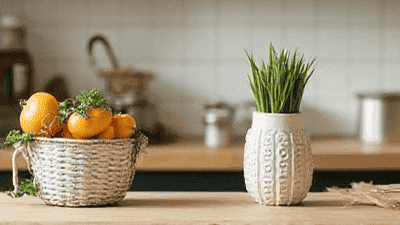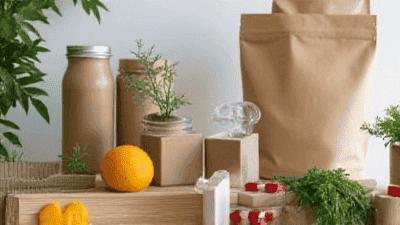
In an age where environmental sustainability is more important than ever, the issue of packaging waste—especially plastic waste—has escalated to alarming levels. The kitchen is often a significant contributor to this problem due to the extensive use of plastic packaging in food storage and preparation. The good news is that consumers can make informed choices to significantly reduce their reliance on plastic.
Plastic pollution has emerged as a critical environmental issue, affecting oceans, wildlife, and human health. Here are some key facts that underline the seriousness of plastic waste:
Global Plastic Production: According to the United Nations, around 300 million tons of plastic are produced annually, with a significant proportion ending up in landfills and oceans.
Longevity of Plastic: Most plastics take hundreds of years to decompose, leading to an accumulation that harms ecosystems.
Microplastics: When plastics break down, they fragment into smaller microplastics that contaminate water sources and enter the food chain, posing potential health risks for humans and animals alike.
Resource Intensive: The production of plastic is resource-intensive, leading to greenhouse gas emissions and fossil fuel extraction, contributing to climate change.
The kitchen often utilizes various types of plastic packaging, including bags, wraps, containers, and single-use items. Here are areas where plastic is commonly used:
By addressing plastic usage in the kitchen, we can contribute to a more sustainable lifestyle and reduce our overall plastic footprint.

Reduction in Plastic Waste: By opting for sustainable packaging, we directly address the issue of plastic pollution. This leads to less litter on beaches and in oceans, and stimulates recycling efforts.
Conservation of Resources: Sustainable packaging often uses renewable resources, reducing dependence on fossil fuels and lowering greenhouse gas emissions associated with plastic production.
Biodiversity Protection: Reducing plastic waste can also protect marine and terrestrial ecosystems from the harmful effects of plastic debris, toxins, and chemical contamination.
Food Safety: Many alternatives to plastic packaging, such as glass and metal, do not leach harmful chemicals into food. This ensures that what you consume is safer and healthier.
Enhanced Taste: Foods stored in glass or stainless steel containers often maintain their flavor better than those stored in plastic.
Avoidance of Allergens: Certain plastics contain allergens or substances that can trigger sensitivities in some individuals. Using biodegradable or organic alternatives can help mitigate this risk.
The first step to reducing plastic in your kitchen is to assess your current usage. Take a moment to identify areas where you're using plastic packaging. Here are some questions to guide your assessment:
By understanding your consumption habits, you can develop a targeted plan to transition away from plastic.
One of the most effective ways to reduce plastic waste is by replacing single-use packaging with durable, reusable alternatives. Here are some options to consider:
Glass Containers: Use glass containers for storing leftovers, meal prep, and baking. They are microwave and oven safe, and they do not retain odors or stains.
Stainless Steel: For lunch boxes and storage, stainless steel containers can be an excellent alternative. They are durable, lightweight, and non-toxic, making them perfect for meal prep.
Silicone Bags: Silicone storage bags are a great alternative to plastic bags. They can carry liquids and are reusable, easy to clean, and perfect for freezing.
Beeswax Wraps: Instead of plastic wrap, consider using beeswax wraps to cover dishes or wrap sandwiches. They are biodegradable and reusable, making them a sustainable option.
Buying in bulk and fresh ingredients is not only cost-effective but also significantly reduces plastic packaging. Here are some strategies to reduce plastic when shopping:
Bulk Bins: Many grocery stores offer bulk bins for grains, nuts, seeds, and legumes. Bring reusable containers or cloth bags to fill with desired items.
Farmers Markets: Shopping at farmers markets allows you to purchase fresh produce directly from local farmers, often with minimal packaging. Bring your own bags and containers for a zero-waste approach.
Seasonal and Local Foods: When you can, buy seasonal and locally produced foods to reduce the carbon footprint associated with transportation and packaging.
Single-use items are a significant source of plastic waste in the kitchen. Making conscious choices can effectively reduce this:
Say No to Plastic Straws: Opt for reusable metal, silicone, or bamboo straws instead of plastic ones.
Eliminate Plastic Cutlery and Plates: Replace disposable utensils and plates with reusable dishes, which are more durable and environmentally friendly.
Invest in Cloth Napkins: Instead of paper napkins, switch to cloth alternatives. They can be washed and reused, significantly reducing paper waste.
Separating food waste and composting can help reduce the overall waste generated in your kitchen. Although composting may not directly relate to plastic reduction, it establishes a holistic approach to sustainability by minimizing refuse in landfills:
Compostable Bags: If you use bags for composting, look for compostable options made from plant-based materials instead of plastic.
Kitchen Compost Bin: Set up a dedicated area for composting kitchen scraps like fruit and vegetable peels. This practice not only reduces waste but also enriches soil if you choose to garden.
When purchasing packaged goods, choose options that utilize sustainable packaging:
Look for Recyclable or Compostable Materials: Select products that are packaged in paper, glass, or metal, or those labeled as recyclable or compostable.
Support Brands with a Commitment to Sustainability: Many brands prioritize eco-friendly packaging. Do some research and choose to support these companies when making purchases.
While reducing packaging is ideal, reusing and upcycling items can offer alternative solutions that minimize waste. Here are a few creative ideas:
Repurpose Glass Jars: Use empty glass jars for storing grains, nuts, or homemade sauces. They serve as an excellent way to organize your pantry and reduce clutter.
DIY Storage Containers: Turn old cardboard boxes or fabric scraps into DIY storage solutions for kitchen items or pantry organization.
Craft Projects: Consider reusing plastic containers for craft projects or repurposing them in your garden, such as using plastic bottles for planters.

Start Gradually: Transitioning to sustainable packaging doesn’t have to happen overnight. Begin with small adjustments and gradually add more sustainable choices to your standard practices.
Stay Informed: Follow trends and information on sustainable alternatives. Many online resources and communities share valuable insights and DIY tips for reducing plastic and living sustainably.
Educate Others: Share your knowledge with friends and family. Encouraging others to adopt sustainable practices can amplify change in your community.
Track Progress: Keep a journal of your efforts and note how many plastics you’ve eliminated over time. Tracking progress can help maintain motivation and assess the effectiveness of your efforts.
Participate in Clean-Up Initiatives: Engage in local clean-up events to actively combat plastic pollution in your community. Not only does this foster community engagement, but it also promotes environmental awareness.
Incorporating whole foods and fresh ingredients into your meals can help reduce reliance on plastic packaging. Here are some recipes that celebrate sustainability, explaining how they contribute to a greener kitchen.
These muffins are a perfect way to use ripe bananas while avoiding excess packaging.
This colorful stir-fry emphasizes fresh, seasonal vegetables, enabling you to reduce your reliance on pre-packaged frozen options.
Making granola from scratch allows you to control ingredients while minimizing packaging waste.
A dynamic dish that utilizes fresh, seasonal vegetables, providing a nutritious addition to your meal planning.

Reducing plastic in your kitchen is a significant step toward promoting sustainable eating and a healthier planet. By assessing your current packaging usage, embracing reusable alternatives, shopping responsibly, and adopting sustainable practices, you can make a meaningful impact on plastic waste.
As you explore ways to reduce plastic packaging, remember that every choice matters. Educate yourself and those around you, set realistic goals, and celebrate the small victories that contribute to a larger movement for environmental sustainability. Together, we can create a kitchen that not only nourishes ourselves but also respects and protects our planet for future generations.